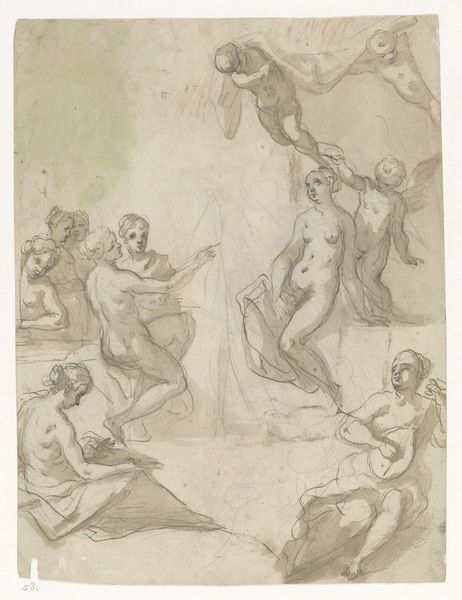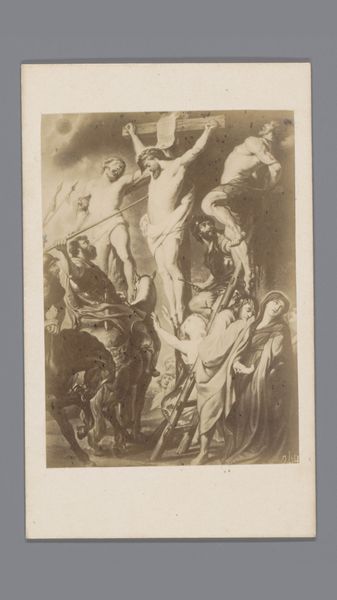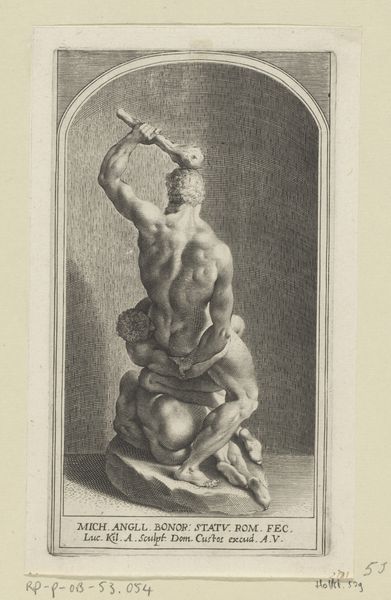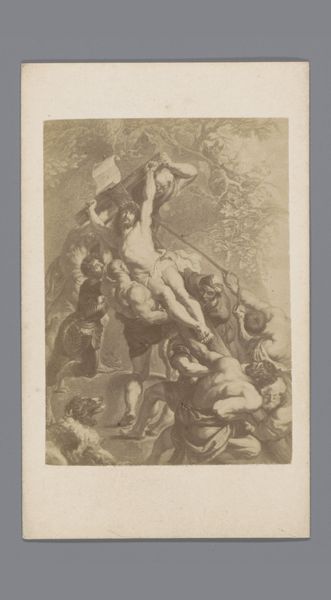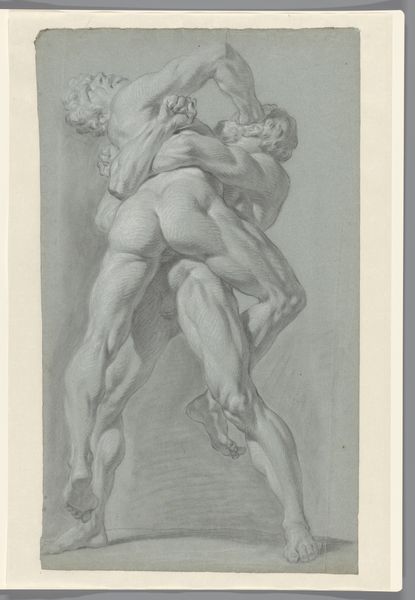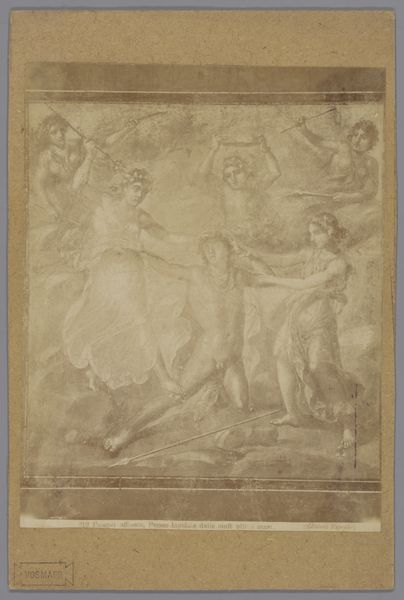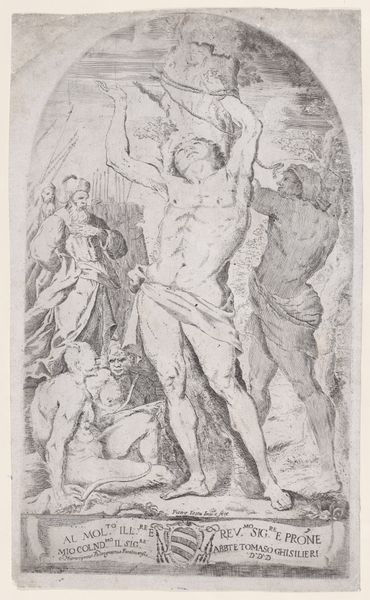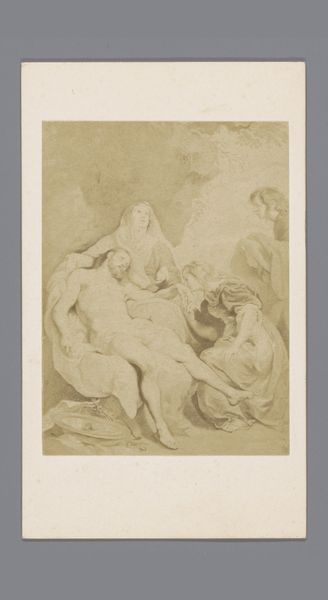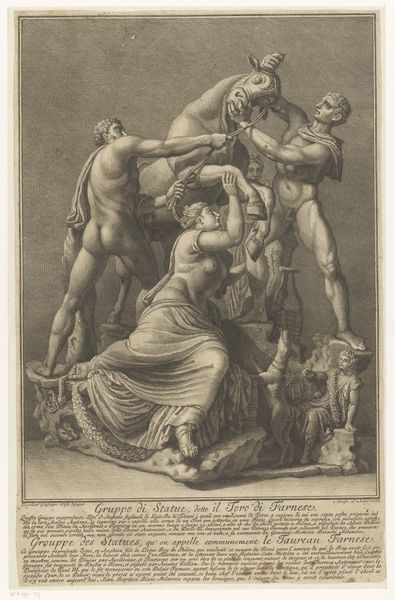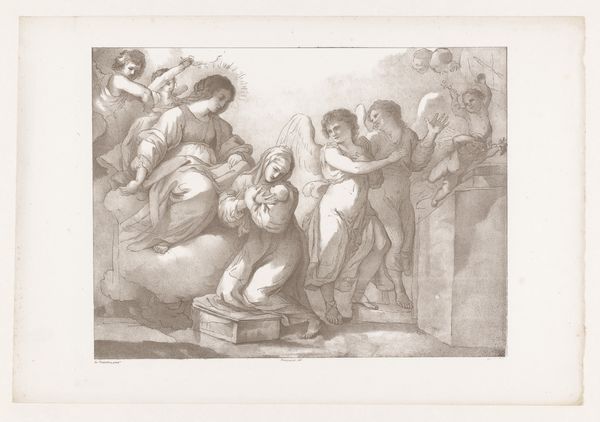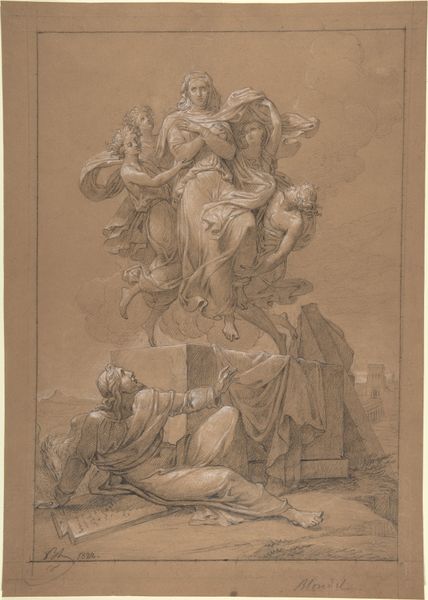
drawing, print, etching, pencil, pen, charcoal
#
drawing
#
neoclacissism
#
narrative-art
# print
#
etching
#
pencil sketch
#
charcoal drawing
#
figuration
#
pencil drawing
#
pencil
#
pen
#
charcoal
#
history-painting
Dimensions: Sheet: 17 1/16 × 11 9/16 in. (43.4 × 29.3 cm)
Copyright: Public Domain
Editor: Here we have "Laocoon: A Classical Subject," an 1838 etching by John Doyle, currently housed at the Metropolitan Museum of Art. It strikes me as incredibly dramatic, filled with struggle. What social narratives were artists interested in depicting at the time, and what statement do you believe Doyle was hoping to make by capturing Laocoon's agony? Curator: It’s crucial to understand the Neoclassical revival of classical subjects during the 18th and 19th centuries. Doyle wasn't simply depicting a historical event; he was engaging in a dialogue about power, morality, and societal disruption. Can you see how the depiction of the male nude, which looks quite erotic by modern standards, might point toward complex notions of gendered power? The Laocoon group, particularly as represented in art, becomes a site to reflect on the vulnerability of the patriarchy, its capacity for suffering, and also maybe its failure to protect their sons from harm. Editor: That's an interesting point; I never considered it in relation to vulnerability, only as triumph over struggle. So the choice to portray Laocoon wasn't only an artistic one, but also a culturally symbolic one? Curator: Exactly. And who are the snakes in the narrative? How do we interpret the power dynamics here in a pre-Freudian and potentially post-Enlightenment European context? The struggle is multi-layered. By examining those power structures, Doyle prompts us to consider our own complicity in oppressive systems. The tension is palpable not just in Laocoon’s struggle, but in the questions it raises about who has power and how it is used. Editor: Thank you. It definitely pushes me to think beyond the surface level drama and towards its social critique. Curator: I’m glad. Art offers a continuous reflection of social struggles. Remember always to keep the wider context in mind as you look at the art.
Comments
No comments
Be the first to comment and join the conversation on the ultimate creative platform.
